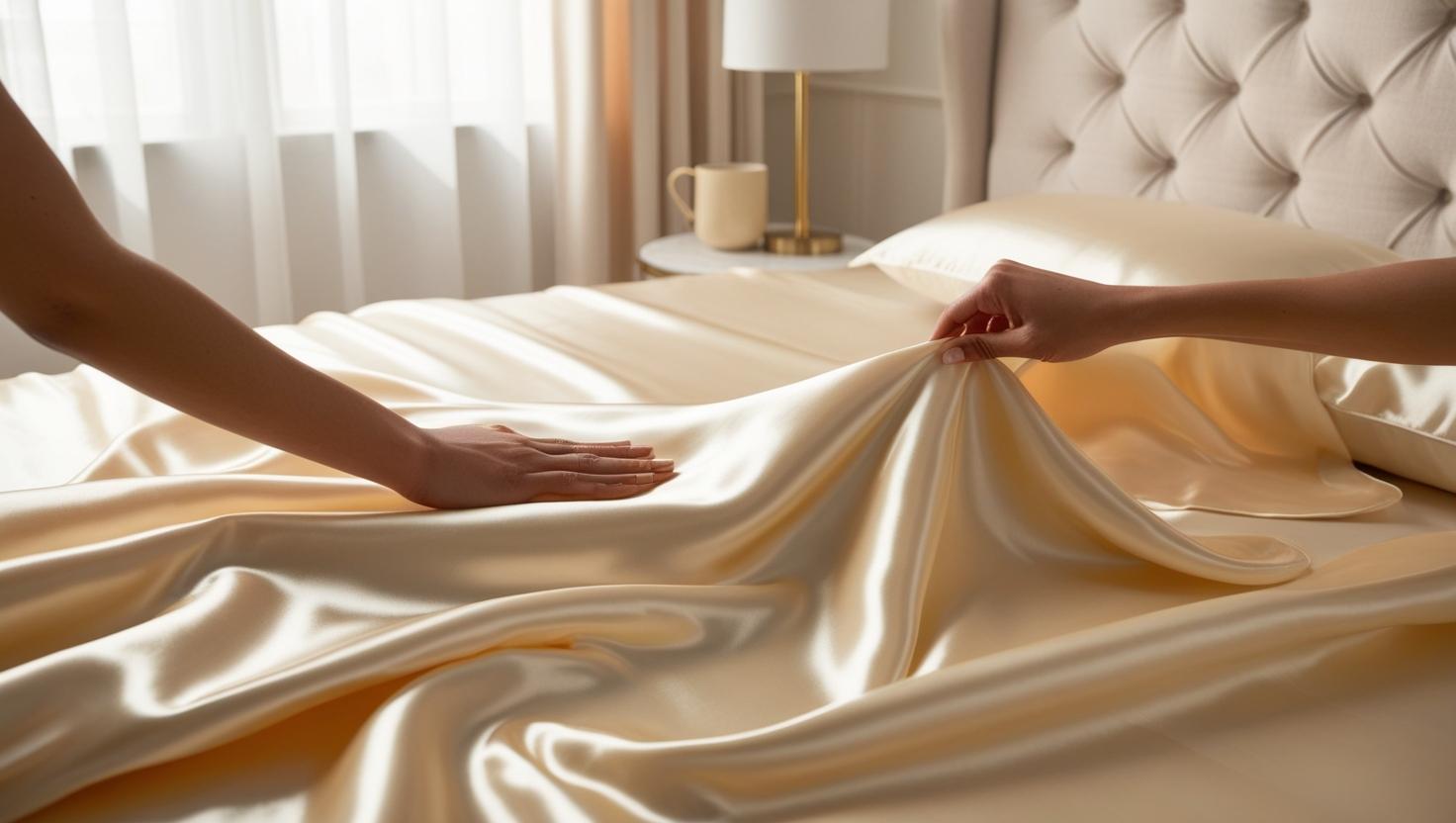Best Bed Material
Finding the best bed material can make all the difference in achieving restful, restorative sleep. In this detailed guide, we’ll uncover how to choose the ideal mattress fabric for your needs.
Key Takeaways
- Understand how mattress materials impact sleep comfort and health
- Compare memory foam, latex, innerspring, and hybrid options
- Learn which materials suit your sleep style, budget, and allergies
Why Material Choice Matters
Choosing the best bed material isn’t just about comfort—it’s about support, breathability, durability, and your overall health. Materials like memory foam contour to your body, latex offers sustainability and hypoallergenic properties, and innerspring systems provide breathable, bouncy support. Understanding these differences helps you align mattress features with personal sleep preferences. For more, see this guide on choosing the best bed frame material.
Additionally, the right bed material can reduce tossing and turning, minimize nighttime wake-ups, and support better posture alignment. The construction of the mattress impacts temperature regulation, which is vital for uninterrupted sleep. Eco-conscious consumers may also prioritize organic or sustainably sourced options to align with personal values. Choosing a bed material that suits your sleep habits and lifestyle can significantly improve your sleep hygiene and overall well-being, making it a worthwhile and health-focused decision.
Memory Foam: Pressure-Relieving Comfort
Memory foam is celebrated for its ability to contour to the sleeper’s body, offering deep pressure relief. This makes it an excellent choice for side sleepers and couples who want minimal motion transfer. Newer memory foams also include gel infusions or open-cell structures to improve airflow and reduce heat retention, addressing the traditional downside of overheating.
In addition to its adaptability, memory foam excels at isolating motion, making it ideal for light sleepers or those with partners. Its density also contributes to spine alignment and relieves common pressure points at the hips, shoulders, and knees. Many brands now offer eco-friendly and CertiPUR-US certified foams, ensuring safer materials. Memory foam mattresses are especially popular in urban areas where quieter, undisturbed rest is a must. Their longevity and lower maintenance requirements make them a practical choice for individuals seeking durability and modern sleep technology.
Latex: Eco-Friendly Support
Natural latex, made from rubber tree sap, provides responsive support and resists dust mites and mold—ideal for allergy sufferers. It’s durable, buoyant, and temperature-neutral. Certified organic latex mattresses, such as those labeled GOLS or OEKO-TEX, are free of harmful chemicals and are among the healthiest and most sustainable choices in bedding today.
Natural latex not only excels in eco-friendliness but also provides a uniquely buoyant feel that combines support with light bounce. Unlike synthetic foams, latex offers zoned support, responding differently to heavier and lighter parts of the body. This makes it particularly effective for back support and spinal alignment. People with chemical sensitivities or environmental concerns often find latex the safest and most ethical choice. With a lifespan of up to 15 years, latex mattresses offer exceptional value and resilience in both comfort and ecological sustainability.
Innerspring: Traditional Support and Cooling
Innerspring mattresses offer a classic feel with excellent edge support and cooling properties thanks to coil-based designs that encourage airflow. Pocketed coils further reduce motion transfer while allowing targeted support. These mattresses are often the most budget-friendly among the best bed material types, making them a great entry point for value seekers. Learn more about different bed frame materials that complement these mattresses.
The high breathability of innerspring mattresses is ideal for hot sleepers or those living in warmer climates. Many feature pillow-top layers or Euro tops that add softness without compromising the resilient support of coils. These mattresses come in a variety of coil configurations, from Bonnell to offset and pocketed springs, each offering distinct benefits in motion isolation and body conformity. Innerspring mattresses are widely available, affordable, and often preferred by people who dislike the sinking sensation associated with foam-based models.
Hybrid: The Best of All Worlds
Hybrid mattresses combine innerspring support with foam or latex comfort layers, giving you the benefits of bounce, breathability, and contouring all in one. They are versatile and suit all sleeping positions, making them a popular choice for couples and people with mixed comfort preferences. You can also check this Casper guide to choosing a bed frame for full bedroom optimization.
By layering premium materials, hybrid mattresses offer customizable experiences that adapt to a wide range of body types and sleep habits. Many models include zoned coils and gel-infused memory foam, ensuring balanced support and cooling. Their construction often includes reinforced edges and transition layers, enhancing both durability and comfort. Hybrid mattresses are particularly suited for those who experience pressure points but need a firmer base for spinal alignment. The diverse combination of materials makes hybrids one of the most innovative and adaptable sleep solutions available today.
Factors to Consider
When deciding on the best bed material, keep the following in mind:
- Sleep Position: Side sleepers often prefer memory foam; back and stomach sleepers may find latex or hybrids more supportive.
- Allergies: Opt for natural latex or certified foam to avoid allergens.
- Budget: Innerspring is affordable, memory foam is mid-range, and latex tends to be the most premium.
Additionally, consider your climate and bedroom environment. Hot sleepers may benefit from breathable materials like latex or innerspring, while those in cooler regions might enjoy the warmth of memory foam. Noise sensitivity is another factor—hybrid and foam mattresses are typically quieter than traditional springs. Think about maintenance as well; latex and memory foam resist sagging better over time, while innerspring may require rotation. Always try to test mattresses in-store when possible or ensure online options come with a generous trial period and return policy.
Choosing the best bed material ensures more than just a good night’s sleep—it’s an investment in long-term health and wellness. Evaluate your unique sleep needs, consider your budget, and use this guide to discover the material that’s truly best for you. For a curated selection, review this list of top-rated bed frames for every style and need.
FAQ
- What is the best bed material for back pain?
- Memory foam and latex mattresses are generally the best choices for back pain due to their pressure relief and support capabilities.
- Is latex better than memory foam?
- Latex is more breathable and sustainable, while memory foam offers superior contouring. The better choice depends on your needs for support, cooling, and eco-friendliness.
- What is the most eco-friendly bed material?
- Natural latex, especially certified organic latex, is the most eco-friendly bed material, offering sustainability, hypoallergenic properties, and long-term durability.
Learn more in our eco-friendly mattress guide, explore our memory foam vs latex comparison, and check out our best hybrid mattress guide.

